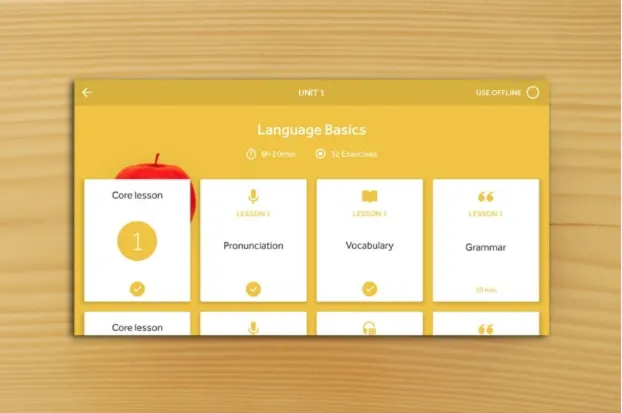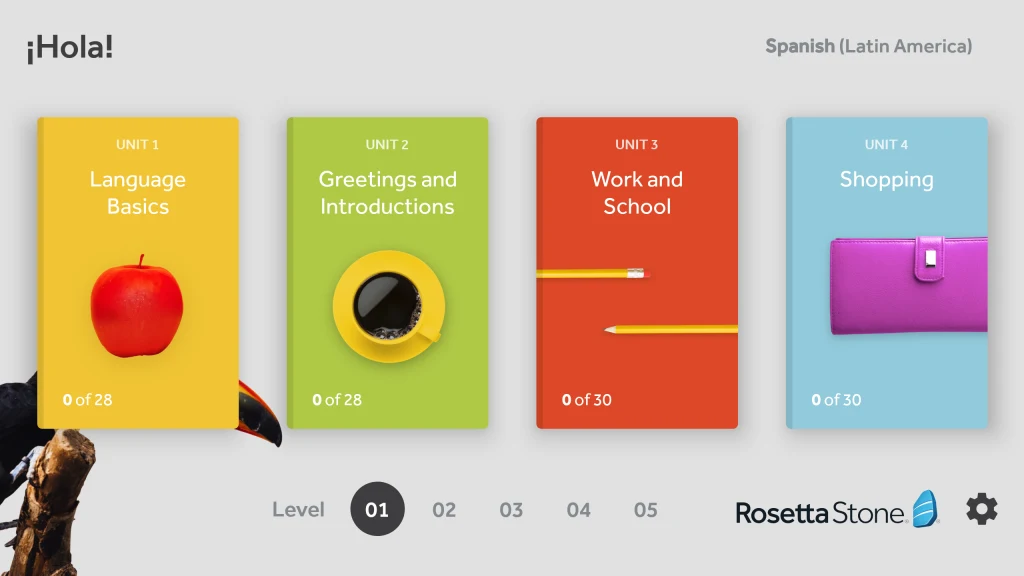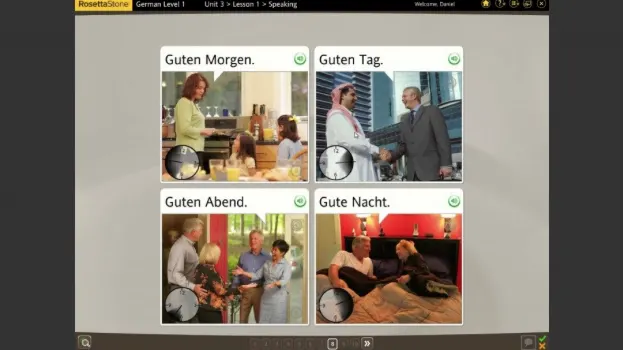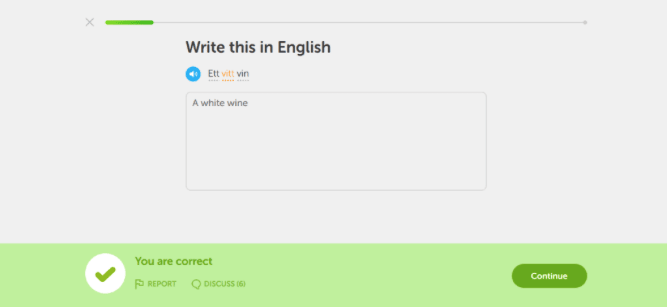- Best LinkedIn Learning Courses (Lynda Courses) - March 31, 2020
- EdX vs Coursera: Which is the Better Online Platform? - March 24, 2020
- Best Online Bookkeeping Courses Worth Taking - March 24, 2020
When it comes to online or computer-assisted language learning, Duolingo vs Rosetta Stone is perhaps the two talked about comparison on the market, or at least the ones everyone has heard of at some point.
Rosetta Stone is a software that has been around since the early days of computer-assisted language learning, its first version released in 1992 and has continuously been refined since. Duolingo has been around since 2011 and still works to add more content for speakers of different languages.
Both use a similar approach to language learning and come highly recommended by their respective user bases, so it’s useful to take a look at the features of both and check not only whether they keep their promise of effectively teaching you a language, but also where the differences between their approaches lie.
Rosetta Stone vs Duolingo – The similarities
Rosetta Stone and Duolingo both primarily offer language courses for casual learners with little time. While both include options for more in-depth study, the core software will leave you with language proficiency you can build on to get through the occasional holiday, but is unlikely to lead to fluency – you wouldn’t reasonably expect that from around 20 days worth of content in any case, as much as both like to claim they are valid equivalents to college-degree language courses.
What’s probably most important to both is the ease of use. You can start learning right away after signing up/installing the necessary components. For Duolingo this means registering an account using your email address and downloading the Android or ioS app to study on the go. Rosetta Stone is installed from a CD-ROM/download code or accessed via an online subscription service, more about that further down.

Using each course is intuitive, whether you are answering multiple choice questions, writing answers by typing them out or checking your pronunciation, you will understand what is asked of you straight away. The main focus lies on getting you to speak as quickly as possible, rather than write, and while both have writing opportunities, this approach has its downsides when it comes to learning a language with a non-roman alphabet like Arabic, where writing often can help you memorize the alphabet more quickly.
Lessons are short enough to be easily incorporated into your daily life even with little time: both offer different overarching topics that then split in several small lessons. You will hardly have to invest more than ten minutes per lesson, not counting necessary repetitions of content now and then. If you invest ten minutes every day you can finish a topic in a week, about twenty minutes a day if you add reviews and repetitions to your routine.
As you are constantly looking at text, your reading skills will probably improve the quickest with both, while listening can be a mixed bag due to the slightly hacked-off nature of the audio samples that can sound unnatural and robotic.
While the key to success in for both programs is repetition, and words and grammatical points are repeated often in both Rosetta Stone and Duolingo, they also ask you to be honest enough with yourself to admit when you have to repeat an entire lesson. Neither will force you to repeat previous material in regular intervals, probably to not make learning boring overall.
To summarize, use Duolingo or Rosetta Stone as your primary tool to study if you:
- Are after casual language knowledge, for example to use during vacation
- Care mainly about speaking instead of writing and reading
- Learn languages best through repetition
Duolingo vs Rosetta Stone – Costs
The cost is without a doubt the biggest difference between Rosetta Stone and Duolingo and decides the question of what service to pick then and there for many.
Duolingo is free
Duolingo is completely free and can be used either on your desktop computer or via the official ioS and Android apps. Once you sign up, you can use it to study the language of your choice, a total of 23 languages are currently on offer. If you want to disable the in-app ads or download lessons for offline use, you can purchase a so-called Duolingo Plus subscription, but none of Duolingo’s content is hidden behind a paywall. That’s because Duolingo’s content is crowdsourced, supplied by its user base. This also means content can be discussed at all times, enabling quick corrections and additions to phrases where necessary.
Some languages offer additional lessons which you can earn by gaining points for learning. In true videogame fashion you gain experience points for each completed lesson and you also gain points for keeping it up over several consecutive days. The points can then be used on additional topics where available.
Rosetta Stone’s payment models

Rosetta Stone has several different models to choose from, but the bottom line is that all of them cost money and there is no way to use it completely for free. Rosetta Stone costs quite a lot of money depending on what you pick. The different service models can be broken down like this:
On one hand there are the CD-ROMs and instant downloads you can buy from third-party retailers like Amazon. They include the full interactive course you need to start learning, which comes with a speech recognition feature and a headset to allow you to, well, speak the language. Rosetta Stone is increasingly moving away from this model, as the price for packages varies depending on the language you want to study and isn’t easily updated. They offer a range of additional features as an incentive for you to choose their other model, the online subscription.
Should you want to own a course forever, the instant downloads or CD-ROMS are your only way. Prices start from $179 and can climb to $200+ depending on language. That is cheaper than older versions of the course, which could cost you up to $500. You can recognize the older version by its blue packaging, newer versions all use a yellow design.
You can subscribe to Rosetta Stone online for 3 to 24 months.
| Rosetta Stone Prices | 3 months | 6 months | 12 months | 24 months |
| Price for new subscribers | $56.97 ($18.99/month) | $83.94
(13.99/month) |
$119.88
($9.99/month) |
$167.76
($6.99/month) |
| Price for existing customers | $79 | $119 | $179 | $249 |
You pay for each of these options in full and up front, which is why Rosetta Stone offers you a 30-day trial period: should you not be happy with your purchase, you’ll receive a full refund. That is a nice concession, but a full-feature demo to use over a limited period of time would have been a better deal. Additionally, should you wish to renew a subscription or go on for more months after you’ve used the initial offer for new subscribers, you pay the price for existing customers – even if you use Rosetta Stone for years (which is unlikely given the number of lessons), you will never own any of the materials you use.
That’s why the most important factor in your decision whether or not to spend money on learning a language this way when there are free alternatives should be the features you can expect and how useful you find them.
The subscription includes several features only included on a trial basis with the CD-ROM/download: different learning games and opportunities to interact with fellow learners within the Rosetta Stone community and use of the mobile app.
There is no free or party free version of the Rosetta Stone app, which allows you to continue studying on the go and saves your progress between devices.
How it works
As mentioned above, both services have some big similarities, but the devil is as usual in the detail.
First of all, if you want to study one of the popular languages spoken by people around the world, you will find what you are looking for with both Duolingo and Rosetta Stone.
Duolingo currently offers a total of up to 23 languages, in Rosetta Stone there are 28.
Both assume you are completely new to the language you want to speak, and thus start off with the absolute basics – words like man, woman, boy, girl, foods, introductions and greetings and so forth.
The method
Rosetta Stone is unique in working with the concept of full immersion – you will not hear your native language once. Instead everything works with pictures. First you are shown a word and its corresponding picture, then several pictures relating to the same thing in order to really drive the point home. To learn the word “blue” for example, you will be shown several blue items until you can be certain of the word’s meaning.

You are then asked to pick the image that fits the word out of multiple different options. If we once again use the example of the word “blue” you may be shown a blue, green, red and white item and have to click the right one. No explanation needs to be given by the program.
After having repeated this process heavily with a number of words, they will then be used in combination using new images picturing a boy and a girl, a dog and a cat, and so forth. Even plurals will only be introduced after you have separately ascertained them with images first.
Due to the regular repetition, which is supposed to make absolutely sure you have not interpreted a word the wrong way, the learning speed can be glacial especially in the early stages. Each topic is made up of several smaller lessons and you can periodically review your progress and complete a short test.
Duolingo on the other hand works with your native language. Due to this and the fact it’s crowdsourced there are more languages available for native English speakers than there are for those with a less widely-spoken language. Duolingo does however work quickly to offer languages to as many people as possible and as mentioned earlier, popular options such as Spanish, Italian or French are almost universally available.
The structure is the same with both systems: a topic divided into short lessons, periodically followed by a test. The first few lessons work the same way they do on Rosetta Stone as well – you will learn a few basic words, repeat them and build on them until you can construct your first sentence. From that point onwards, using translations into your native language has one clear advantage: it makes grammar easier to understand.

Duolingo makes it almost too easy on you sometimes, as you can always check the answer is you get stuck or skip a task. Even if you are not a person prone to cheating yourself it would perhaps be better to remove the temptation to look something up in order to get you to trust yourself, but this is a minor complaint.
The overall approach is similar to Rosetta Stone’s in that you will be shown a sentence or a new grammatical point based on something you have previously learned and have to infer from that how to use the word or the grammatical rule. Duolingo, too, will use many examples and repeat them often to make the use clear.
Repetition can mean translating a word from your native language to the target language and vice versa, picking the correct translation from multiple choices, picking the corresponding picture, saying the word or sentence out loud or writing it. Overall Duolingo offers more options for repetition since it is including your own language in the process and it will switch methods of repetition more often. The overall pace is no quicker than with Rosetta Stone however, and it’s still repetition, meaning it can get slightly tedious.
The big downside with the approach of both services is that it will take you a while to get to a level where you can actually use your new language on someone. The best case scenario for any learning method, whether it is swearing by immersion or not, is that you actually speak to people, either through one the program itself or outside of it, but for most adults being able to say “the apple is red” or “my grandfather is 90 years old” isn’t conducive to any kind of conversation, and so it will take a good deal of time until you can actually immerse yourself. Language textbooks usually avoid this problem by concentrating on situational content first, meaning that university students will focus on conversations in which they introduce themselves as a student first.
Studying beyond the basics
While simply showing you a sentence to teach you a grammar point the way Duolingo does can always lead to misunderstandings no matter how good you are at inferring something, it is still is a step ahead of Rosetta Stone’s method, because learning grammar using pictures is difficult and sometimes near impossible.
That is mainly because the pictures add no value to learning grammar and you will have to hope for enough different examples to work out the meaning and use over time. Duolingo shows you a sentence and its translated equivalent, which is difficult when you don’t understand the point itself or there are sudden exceptions to a rule, but at least you know what you are looking at.
There are many language learners who believe grammar isn’t all that important language learning, seeing as what you really want is vocabulary to use. Those people will do fine with either system, but some people might be bothered by using something without knowing exactly how, and thus lose confidence. Then there’s the issue with Rosetta Stone’s pictures themselves. The company has invested a lot of money in hiring models and positioning them so that the meaning of the picture becomes abundantly clear, but sometimes it just…isn’t all that clear.
There are many reasons why this could be, maybe some people are simply better at inferring than others, maybe the design assumption is for you to look something up elsewhere if you don’t understand it (it shouldn’t be). Rosetta Stone however, invested a lot of money and a lot of manpower in its product to come up with a solution that is supposed to work for everyone. After all, that effort in combination with universal accessibility is supposed to justify the price tag. That doesn’t mean that you shouldn’t expect anything in return from Duolingo. Rather, it is a strong sign that perhaps, sometimes less is more.

Duolingo has a much stronger focus on grammar, but the lack of any useful explanation can make this unnecessarily difficult and frustrating for some. Whole lessons are simply named after a grammar topic. Despite all the satisfying gamification like experience points and progress bars that makes studying grammar a breeze because they make you want to get back to it and rack up more points, this is Duolingo’s great weakness. Where Rosetta Stone focuses too little on grammar, Duolingo does it too much, stoically giving students another item to check off the list instead of presenting it in an engaging fashion.
Context is necessary
People react better to the prospect of studying an interesting topic than simply going down a list of grammatical subjects and working through them one by one. Interesting content is key to language learning and the so-called immersive content should actually immerse you in the culture and different situations you can find yourself in speaking with a native speaker or visiting a country where your language of choice is spoken.
In their insistence to get you to say “the cat eats the fish” just right, neither Duolingo nor Rosetta Stone take into account that there are a lot of contexts in which you can learn both “cat” and “fish” that would be more interesting and allow you to actually use a language much more quickly.
You will definitely learn to create basic sentences with both, but since both methods also lack a certain something, they gradually lose value the more complicated a language is and paradoxically, the better you get at it.
Complex topics take time, which is exactly what most users of Rosetta Stone and Duolingo don’t have.
Extra features
Rosetta Stone realized this shortcoming of their core program, which is why it comes with several extra features. It’s this attention to detail as well as several extra features for online subscribers that can explain why the software is so pricey, too. Those features can give Rosetta Stone an edge over their free competition for those who work fine with the immersive method and are looking for that little something without wanting to download a lot of extra apps or sign up for additional services.

Rosetta Stone does have a more extensive content library than Duolingo overall. There are a lot of basics, plenty of repetition, but while Duolingo has you translate the odd sentence, a lot of effort has been put into Rosetta Stone’s reading and speaking exercises.
You get extensive reading exercises with audio read by a native speaker. It is read at a very good pace and probably the part of the whole program in which your progress becomes most apparent, since in reading, grammar and vocabulary naturally come together.
You will also write a little more often using Rosetta Stone than in Duolingo, even though you’re not working with any translations. While the writing test is very basic, it is still better than what Duolingo offers in their lessons and short tests.
One feature that is often mentioned is the speech recognition. It was developed specifically to help non-native speakers recognize the speech patterns natural to their target language and gives you a wave analyzer to be able to visualize how it’s done if you’re really having trouble. This is a great idea for tonal languages where every mispronunciation can make a world of difference.
As with every bit of modern technology, this one works great sometimes and not at all at other times. Users have reported great trouble with anything being recognized at all or the program literally recognizing everything, from sneezes to barks, as correct answers.
A really good aspect of it is that it puts you under a tiny bit of pressure when waiting your answer. You have a limited amount of time, which emulates a real world setting really well, or at least one in which you don’t want to come off as awkward. The problem is that the quicker you answer, the more trouble the software has with recognizing what you said.
But there’s more – Rosetta Stone is no stranger to gamification, and as such offers a few fun if slightly gimmicky learning games as part of the subscription that are great particularly for vocabulary learning. Games include bingo, vocabulary guessing and can be played in multiplayer either with someone speaking your target language or attempting to learn your native language.
The most worthwhile service Rosetta Stone offers is live tutoring. Unfortunately this is actually a premium service that comes at an additional cost to your already expensive subscription, but if you are happy with the Rosetta Stone learning method it makes sense to use a teacher who has been trained in it. Tutoring services cost money everywhere, and this is a good opportunity to clarify aspects of the program you previously struggled with, even though tutors, too, will never speak your native language with you.

Tutoring comes in private sessions or group sessions with up to 3 other participants. Both kinds of lessons last about 25 minutes and can be taken after every second and fourth core lesson. You can pay $20 for a single private session or book a package of 6 sessions for $100.
Group sessions come in packages of either 5 or 10. 5 lessons will cost you $70, and 10 lessons come at $100.
Being crowdsourced, Duolingo can’t offer the same amount of structured content Rosetta Stone has available, but the section of the website called Duolingo Labs has great content that is easily overlooked. Everything you can find in it is still experimental and an effort of users and the company alike, but a lot of it is so good it deserves being mentioned.
If you are dedicated to becoming a part of the Duolingo community, you can get immersed in the language and maybe make a few friends using Duolingo Events.
You can search through a list of cities that host group meetups, clicking on the city of your choice shows the languages you can talk to people in and the next events that are planned. You will of course be more successful in finding someone if you speak or learn a popular language and live in a big city. French, Spanish, German and of course, overwhelmingly English are popular options across the world. Some people also simply use these to meet up with other natives abroad.
Duolingo has a fantastic feature called Duolingo Stories which should definitely become part of the core program once it surpasses its status as experimental feature. It consists of short conversations, read my native speakers at a good tempo, during which you will periodically be asked to answer questions to prove your comprehension. The dialogues sound natural and finally revolve around topics that are useful in everyday life, like following directions and using public transport.

Rosetta Stone vs Duolingo – The verdict
After this detailed look at the features of both and their individual pros and cons it’s time to summarize.
It makes sense to want to compare Duolingo and Rosetta Stone, as they are geared towards the same target group – absolute beginners in a language who have little time and are looking for an easily understandable approach that will jumpstart their journey to language acquisition.
In this direct comparison, Duolingo comes out on top.
Each service however, follows a distinctly different strategy. Potential users have to decide what method works best for them and what kind of community they are looking to join in the long run.
It’s necessary to repeat that if you are serious about studying any language; neither of the two will get you far by itself. They are good additions, but for the all-around approach they promise there are better alternatives, simply because they have tried to create a singular system that fits every language.
If learning the basics is enough for you and you want to study a popular language, Duolingo is the better option, mainly because for being so similar to Rosetta Stone in features, it is completely free and equally motivating.
Rosetta Stone
| Pros | Cons |
| Easy to use | High price |
| Thoroughly tested and refined by experts | Method makes it difficult to study grammar |
| Many features | Content needs to be more compelling |
| Great for beginners who need a slow pace | Some features are still buggy |
| Many languages to choose from | |
Duolingo
| Pros | Cons |
| Easy to use | |
| Completely free | Core content needs to be more compelling |
| Great for beginners who need a slow pace | Core program could use more features |
| Interesting experimental/community features | |
| Many languages to choose from |

